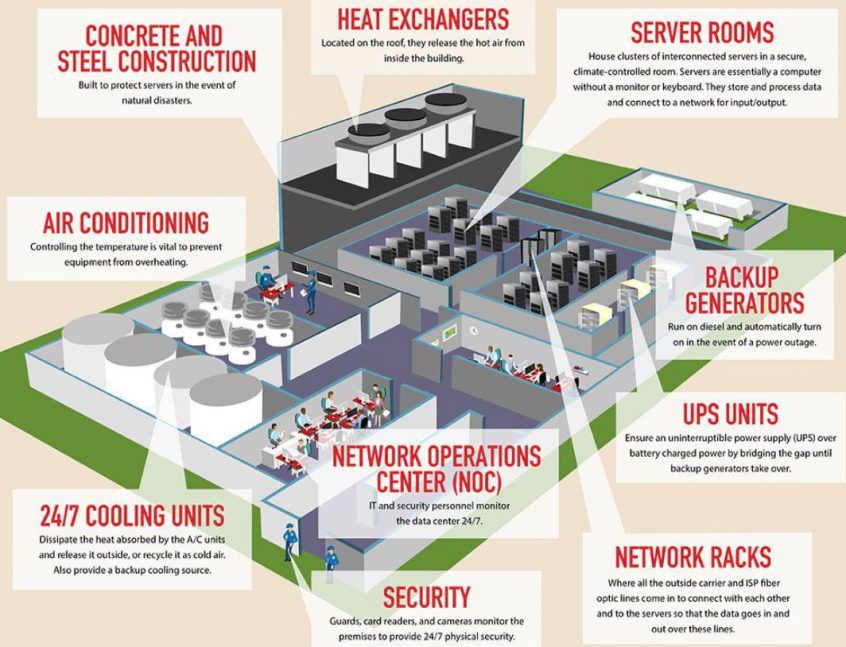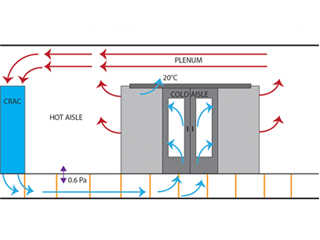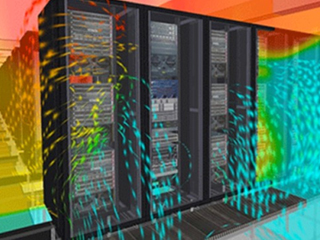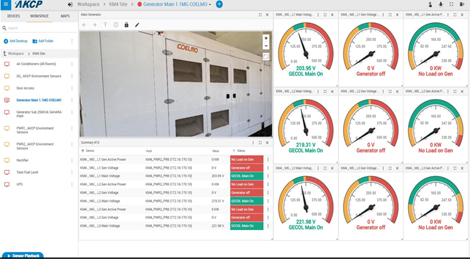A technical document that is intended to be used as a rule, a guideline, or a definition is referred to as a “standard.” It’s a method of accomplishing something that has been agreed upon and can be repeated. All interested stakeholders, such as manufacturers, consumers, and regulators of a certain material, product, process, or service, are brought together to set data center standards. Standardization benefits all parties by ensuring product safety and quality, as well as lowering transaction costs and prices.
As the demand for data center services continues to rise the demand for power and efficiency also increases. A standard by which to measure and rank data center efficiency is becoming vital.
There are existing standards that support digital infrastructures and upcoming growth. These are the instruments that are required to establish benchmarks for improved understanding and continuous development of digital service delivery, both in terms of dependability and energy efficiency. Below are the common data center standards currently followed by the whole data center industry today:
Existing Industry “Standards”

Uptime Institute
During the design, construction, and commissioning phases of a data center, this standard develops a performance-based approach for determining the facility’s resiliency in terms of four levels of redundancy/reliability. In the table below, the UI white paper TUI3026E provides a more detailed explanation of the tiers. The Uptime Institute was founded as a user group for data centers, and it was the first to evaluate and compare the reliability of a data center. It is a non-profit organization that certifies a facility to its standards, which are frequently questioned.
International Standard Organization (ISO)
As far as data center operations and maintenance go, there are a number of ISO standards that can be used. Not all data center procedures, including financial management, equipment life cycle planning, and a variety of others, are covered by ISO, which is a shame. Because the ISO standards are so broad, they need a lot of work on the part of the data center owner and operator to put them into practice. Here’s a standard series example:
- ISO/IEC 30134-1:2018 Part 1: Overview and General Requirements
- ISO/IEC 30134-2:2018 Part 2: Power Usage Effective (PUE)
- ISO/IEC 30134-3:2018 Part 3: Renewable Energy Factor (REF)
- ISO/IEC 30134-2:2017 Part 4: IT Equipment Energy Efficiency For Servers (ITEEsv)
- ISO/IEC DIS 30134-6 Part 6: Energy Reuse Factor (ERF)
- ISO/IEC CD 30134-7 Part 7: Cooling Efficiency Ratio (CER)
- ISO/IEC CD 30134-8 Part 8: Carbon Usage Effectiveness (CUE)
- ISO/IEC CD 30134-9 Part 9: Water Usage Effectiveness (WUE)
Here are some additional ISO Standards:
-
ISO 50001 – Energy Management System
This outlines energy management practices that are considered globally leading. This standard is based on the management system model of continual improvement also used for other well-known standards such as ISO 9001 or ISO 14001. The standard can significantly help in saving energy, cost, and emission reduction.
-
ISO 14000 Series
This is a series of international standards regarding environmental management. It provides a framework of essential elements for putting an effective Environmental Management System (EMS) in place.
-
ISO 14040
The standards provide details for conducting a Lifecycle Assessment (LCA) in conjunction with ISO 14044. It coves LCA Studies and life cycle inventory studies. This standard addresses the environmental aspects and potential environmental impacts throughout a product’s life cycle from raw material acquisition through production, use end-of-life, recycling, and final disposal.
ASHRAE
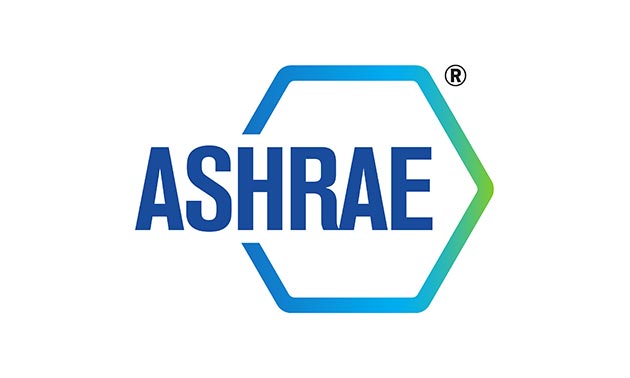
Photo Credit: www.ashrae.org
The American Society of Heating, Refrigeration, and Air-Conditioning Engineers is a non-profit organization dedicated to developing the arts and sciences of HVAC and related professions around the world. They promote a more sustainable society, they have to set standards for an industry that is continuously evolving in response to technological needs. In the end, the Department of Energy (DOE) rules are based on the group’s recommendations and implemented by the DOE.
The Energy Standard for Data Centers ASHRAE Standard 90.4-2019 specifies the minimum energy-efficiency requirements for data center design and operation, taking into account their specific load requirements in comparison to other facilities. For data centers with a conditioned floor area greater than 20 W/ft2 and IT equipment loads greater than 10 kW, Standard 90.4 contains specific requirements for mechanical and electrical systems installed in new data centers or data center additions/alterations that require new mechanical or electrical systems, as well as specific requirements for new mechanical and electrical systems installed in existing data centers.
“The guiding idea for the development of Standard 90.4 was that data centers are mission-critical facilities that require careful consideration of the impact of requirements,” stated Richard Zubin, chair of the Standard 90.4 committee. “With the new standard, operators and designers may employ the most up-to-date and efficient equipment and procedures to reduce energy consumption while avoiding potential reliability issues.”
TIA 942-A 2014
Data Center Telecommunication Infrastructure Standard is based on the Uptime Institute’s Tier Standard, this standard is mainly focused on IT cable and network redundancy and dependability concepts. TIA chose to use the phrase “Rated” instead of “Tiers,” which are specified as Rated 1-4 after UI requested that TIA stop using the Tier system to denote reliability levels. The TIA standard includes tables that make it simple to find the ratings for telecommunications, architectural, electrical, and mechanical systems. Using the 2005 standard as an example:
ANSI/BICSI 002-2014
Best Practices for Data Center Design and Implementation: This standard covers the major areas of the MEP building trades’ planning, design, construction, and commissioning, as well as fire protection, IT, and maintenance. It is laid out as a blueprint for the design, building, and operation of data centers. Classes 0 to 4 are used to determine ratings/reliability, which are then certified by BICSI-trained and qualified personnel.
The Green Grid

Photo Credit: www.snia.org
End-users, legislators, technology suppliers, facility architects, and utility companies work together to increase the efficiency of IT and data center resources around the world through the Green Grid, non-profit, open industry cooperation. Power Usage Effectiveness (PUE) is a way of calculating data center energy efficiency that compares the total energy utilized by the data center to the energy spent by the active equipment.
Standardized Key Performance Indicators (KPI)
- ISO/ IEC TR 23050: 2019 Information technology – Data Centers – Impact on data center resource metrics of electrical energy storage and export – Excess Electrical Energy Factor (XEEF).
- ISO/ IEC TR 30132-1: 2016 Information technology – Information technology sustainability – Energy efficient computing models – Part 1: Guidelines for Energy Effectiveness Evaluation.
- ISO/ IEC DIS 21836 Information technology – Sustainability for and by information technology – Smart data center resource monitoring and control.
- ETSI – EN 303 470 Environmental; Engineering (EE); Energy Efficiency measurement methodology and metrics for servers.
European Data Center Standards
CENELEC

Photo Credit i2qs.pro
The European Committee for Electrotechnical Standardization (CENELEC) is a group that brings together 34 European countries’ National Electrotechnical Committees.
In the electrotechnical sphere, CENELEC develops voluntary standards that aid the commerce between countries, the creation of new markets, the reduction of compliance costs, and the establishment of a Single European Market.
Electromagnetic compatibility, accumulators, primary cells, and primary batteries, insulated wire, and cable, electrical equipment and apparatus, electronic, electromechanical, and electrotechnical supplies, electric motors and transformers, lighting equipment and electric lamps, low-voltage electrical installations materials, electric vehicles, railways, smart grid, smart metering, solar (photovoltaic) electricity systems, etc.
EN 50600
The EN 50600 series is an international series of data center standards that is constantly evolving. The UI, TIA, and BCSI standards are all reflected in many areas of this standard. The Availability Classes, which range from 1 to 4, are used to rate the facilities. The following is a breakdown of the standard:
-
- EN 50600-1 General Concepts
- EN 50600-2-1 Building Construction
- EN 50600-2-2 Power Distribution
- EN 50600-2-3 Environmental Control
- EN 50600-2-4 Telecommunications Cabling Infrastructure
- EN 50600-2-5 Security Systems
- EN 50600-2-6 Management And Operational Information Systems
How AKCP Monitoring Helps Meet The Standards
To track and manage IT assets and the environmental conditions that surround them, AKCP offers products that provide completely automated, real-time, wireless data center monitoring solutions that considerably reduce the time and expense of doing so.
Our world-class central monitoring and administration software are AKCPro Server. It’s suitable for a variety of monitoring tasks. Monitor your infrastructure, whether it’s a single building or a network of sites spread out across a large area. Integrate Modbus, SNMP, and ONVIF-compliant IP cameras with third-party devices.
Features Include:
- Drilldown Mapping Interface
- Modbus, SNMP, and PING virtual sensors (Licensed feature)
- Live PUE calculations
- Customizable Desktops
- Access Control Management
- Centralized Monitoring And Management Of Sensors And Base Units.
- FREE For Monitoring All AKCP Devices
- ONVIF Camera Integration (licensed feature)
AKCP Environmental Monitoring
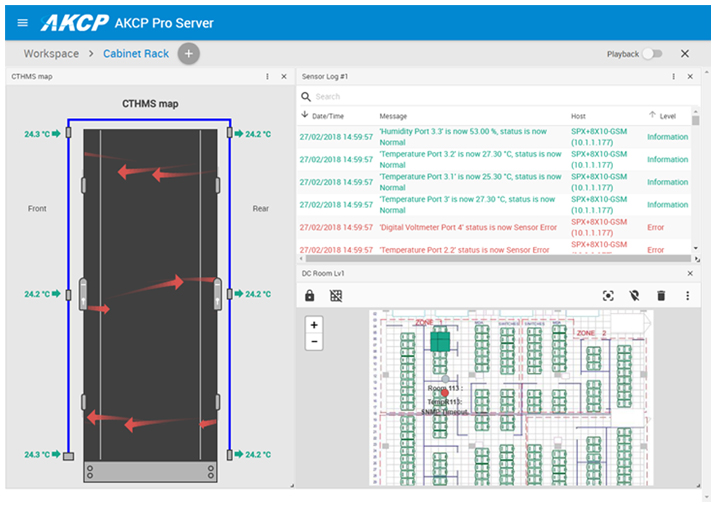
AKCP Monitoring
- Maintain Optimal Temperature- To save energy and ensure that critical IT equipment is not overheated, use temperature data to improve the cooling system and raise the ambient temperature.
- Keep Your Humidity In Check- Avoid electrostatic discharge (ESD) difficulties in low-humidity areas and condensation problems in high-humidity areas by maintaining optimum humidity levels.-
- Maintain Optimal Pressure- Identify air pressure differences that could lead to hot aisle/cold aisle partition leaks, and cut off unnecessary airflow to save energy.
- Secure Your Cabinets- When a cabinet door is opened, use a contact closure sensor to initiate an event like capturing a picture with a camera.
- Detect Water Leaks- Find out if a water leak is coming from the outside or from a water-cooled rack’s pipes. It also works with a 50/50 mixture of glycol and water.
- Monitor and Manage Airflow- To ensure that the cooling and containment systems are working properly, keep an eye on the flow rates of cooling and hot air return.
Environmental Sensors Enable Data Center Operators To:
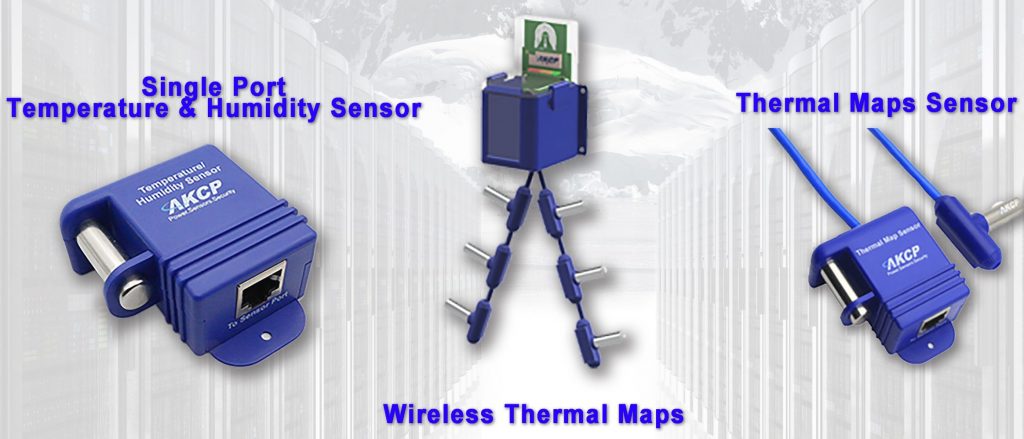
AKCP Temperature Sensors
- Ensure Uptime by monitoring racks for potential hot spots.
- Save on cooling by confidently raising data center temperatures
- Improve data center availability by receiving environment alerts
- Make strategic decisions on cooling and containment
- Set thresholds and alerts to monitor onsite or remote facilities
Consistency And Documentation Are Key
Which standards are appropriate for your facility will depend on the nature of your business. The US requirements may apply if you have several facilities in the United States. An international standard may be more appropriate for those with international facilities or a combination of both. The idea is to pick a standard and stick to it. Derogations should be documented and approved by all facility stakeholders if they are required due to site constraints, cost constraints, or availability constraints.
In any case, one of the most crucial aspects of the process is documenting and keeping track of your operations and maintenance tasks. Using software management tools for operations and maintenance, such as Data Center Infrastructure Management (DCIM), Computerized Maintenance Management System (CMMS), Electrical Power Monitoring System (EPMS), and Document Management System (DMS), all required procedures, infrastructure assets, maintenance activities, and operational issues can be viewed through a single pane of glass, allowing for a single point of view.
The mission of the company must be met by your facility. The mission should guide the choice of data center design, construction, and operational requirements. Because not all facilities serving your industry’s objective will be the same, even if they are in the same industry, your facility may differ in appearance and operation from others.
Reference Links:
https://searchitoperations.techtarget.com/tip/Data-center-monitoring-system-considerations
https://www.diva-portal.org/smash/get/diva2:1216563/FULLTEXT01.pdf
https://www.upsite.com/blog/introduction-to-international-data-center-standards-part-1/
https://www.upsite.com/blog/introduction-to-international-data-center-standards-part-2/
https://www.solarwinds.com/topics/data-center-management-solutions

